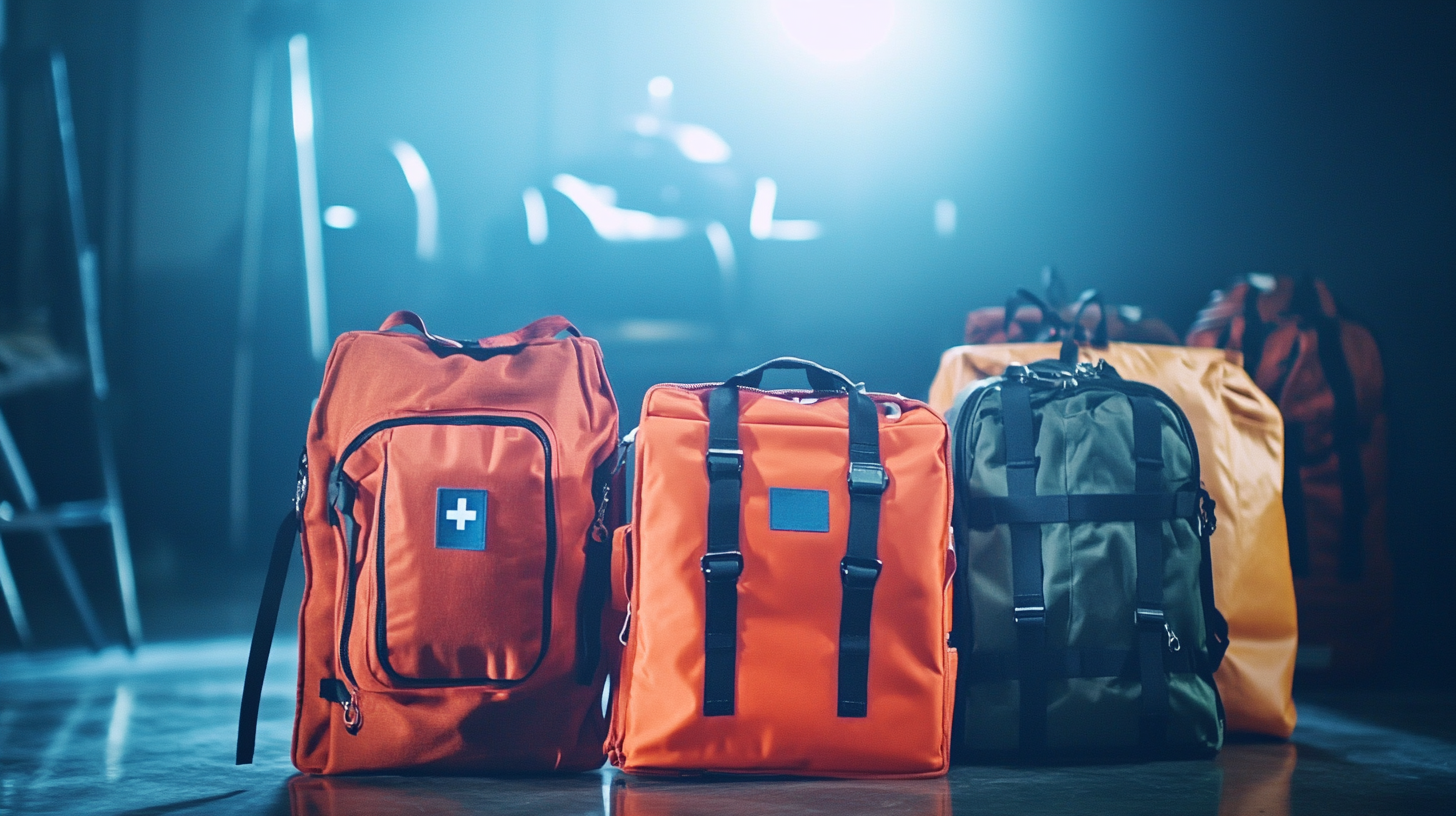Innovative Uses of Best Emergency Preparation Bags Across Various Industries
In today's unpredictable world, the significance of Emergency Preparation Bags cannot be overstated, as they play a crucial role in ensuring safety across various sectors. According to a report by the International Disaster Emergency Management Association, over 12 million people are affected by disasters every year, highlighting the necessity for effective emergency preparedness. Industries such as healthcare, education, and manufacturing increasingly recognize the value of these bags, utilizing them for quick response to emergencies ranging from natural disasters to workplace accidents. A recent survey in the emergency management field revealed that 82% of organizations have adopted specialized bags tailored to their specific needs, showcasing a trend toward innovation and efficiency in preparedness strategies. This blog will explore the innovative uses of the best Emergency Preparation Bags across diverse industries, emphasizing their critical role in safeguarding lives and enhancing response capabilities.

Emerging Trends in Emergency Preparedness for Healthcare Facilities and Hospitals
In recent years, the healthcare sector has witnessed a paradigm shift in emergency preparedness, driven by emerging trends and innovative practices. According to a report by the Centers for Disease Control and Prevention (CDC), over 50% of hospitals have revamped their emergency response plans to better address natural disasters and pandemics. This transformation has inevitably highlighted the crucial role of best emergency preparation bags, which have become essential in ensuring immediate access to necessary supplies during critical incidents.
For instance, many healthcare facilities are now incorporating specialized emergency preparation bags tailored to specific crises, such as infectious disease outbreaks or mass casualty incidents. A study published in the Journal of Healthcare Management noted that hospitals employing pre-packaged emergency kits reported a 30% increase in efficiency during response efforts. These bags often contain not only medical supplies but also critical communication tools and personal protective equipment, aligning with the updated National Fire Protection Association (NFPA) standards. With the integration of technology, such as mobile apps that track inventory in real-time, healthcare facilities are enhancing their preparedness strategies, ensuring they are ready to face any potential challenges ahead.

The Role of Emergency Bags in Disaster Response for Non-Profit Organizations
In the face of natural disasters, non-profit organizations play a crucial role in disaster response, and emergency preparation bags have emerged as a vital resource in this effort. These bags, equipped with essential supplies, become lifelines for people affected by crises like Hurricane Helene. Local and regional charities are rallying to provide relief, showcasing the importance of having properly stocked emergency bags ready to distribute to those in need. The effectiveness of these bags lies not only in the items they contain—such as food, water, and medical supplies—but also in their capacity to be quickly deployed when disaster strikes.
As organizations mobilize to assist hurricane survivors, funding for emergency equipment has become increasingly essential. A recent grant of $1 million aimed at replenishing disaster relief supplies illustrates the commitment of both communities and charitable foundations to support affected populations. Emergency bags can significantly humanize the relief effort, providing immediate support and comfort to individuals facing overwhelming loss and uncertainty. It is imperative for non-profits to prioritize the acquisition and distribution of these bags, ensuring they can respond swiftly and effectively to future emergencies.
Innovative Applications of Emergency Bags in Corporate Risk Management Strategies
In today's fast-paced corporate environment, integrating emergency preparedness into risk management strategies has become essential. Emergency bags, often perceived as tools for individuals, find innovative applications in corporate settings, enhancing overall preparedness and ensuring employee safety during unforeseen events. These bags serve as a proactive measure, enabling companies to respond efficiently to various crises, from natural disasters to medical emergencies.
**Tip:** When selecting emergency bags for your corporate environment, consider customizing them to fit the specific needs of your workplace. Personalizing the contents based on potential risks associated with your industry, geographic location, and employee demographics can significantly improve response effectiveness and employee confidence.
Furthermore, regular training sessions on effectively utilizing these emergency bags can amplify their impact. Employees should be familiar with the contents and trained on best practices for managing emergency situations. Incorporating realistic simulations into your training regimen not only familiarizes your staff with the bags but also helps foster a culture of preparedness within your organization.
**Tip:** Schedule annual drill exercises that focus on emergency protocols and the use of emergency bags. This reinforces the importance of preparedness and ensures that all employees are well-equipped to handle potential emergencies, enhancing both personal and corporate resilience.
Utilizing Emergency Preparedness Bags in Educational Institutions for Student Safety
In today's unpredictable world, educational institutions are increasingly recognizing the importance of incorporating emergency preparedness bags into their safety protocols.
According to the National Center for Education Statistics, approximately 20% of public schools reported having an emergency preparedness plan in place. However, a critical component of these plans often remains underutilized—the emergency preparation bag. These bags contain essential supplies such as first aid kits, flashlights, non-perishable food, and communication devices, all tailored to meet the specific needs of students and faculty during crises.
The American Red Cross emphasizes that having a well-stocked emergency preparedness bag can significantly enhance safety measures in schools. Reports indicate that institutions that regularly conduct emergency drills while utilizing these bags experience a 30% increase in student and staff confidence during actual emergencies. By incorporating emergency prep bags into their safety strategies, schools can ensure that they are not only prepared for natural disasters but also for potential threats, thereby creating a more secure environment for learning. This proactive approach not only mitigates risks but also fosters a culture of safety awareness among students, preparing them for any situation they may encounter.
Best Practices for Customizing Emergency Bags in Hospitality and Tourism Industries
In the hospitality and tourism industries, customizing emergency preparation bags is essential to ensure guest safety and operational continuity. According to a recent report by the World Travel and Tourism Council (WTTC), 78% of travelers prioritize safety when choosing accommodation or activities. This growing concern has prompted businesses to invest in tailored emergency bags that cater specifically to their clientele's needs. These custom bags often include items like personal protective equipment, first-aid supplies, and emergency contact information, reflecting a commitment to safety and preparedness.
Best practices for customizing these emergency bags involve assessing the unique risks associated with the location and the demographic of guests. For instance, hotels located in coastal areas might include shark bite kits, while mountain resorts could benefit from including altitude sickness remedies. The American Hotel and Lodging Educational Institute states that 67% of hotels that implemented customized emergency protocols reported increased guest confidence during their stay. By actively engaging in risk assessment and tailoring their emergency preparation, hospitality and tourism businesses can significantly enhance their reputation and safeguard their guests' experiences.

